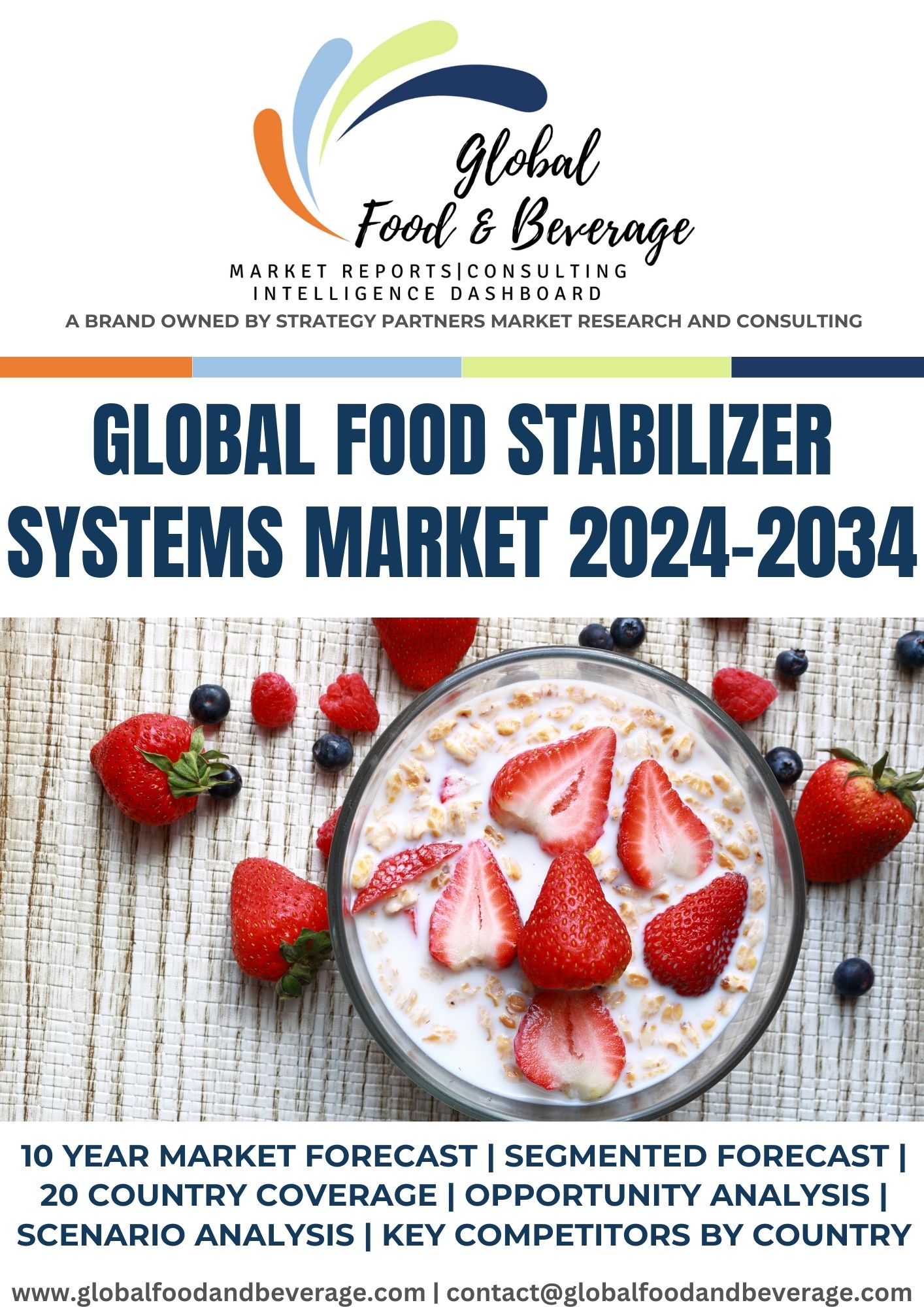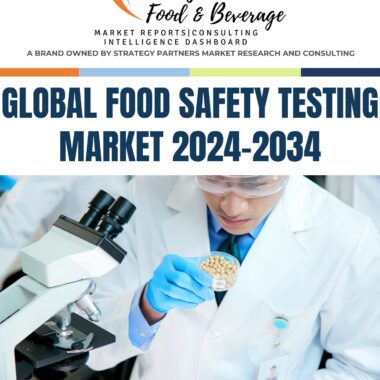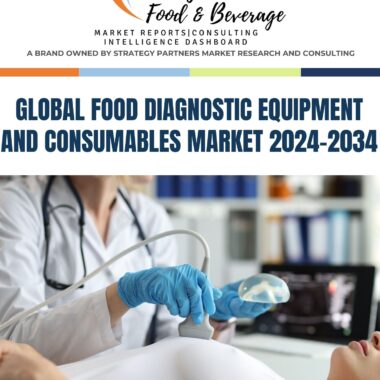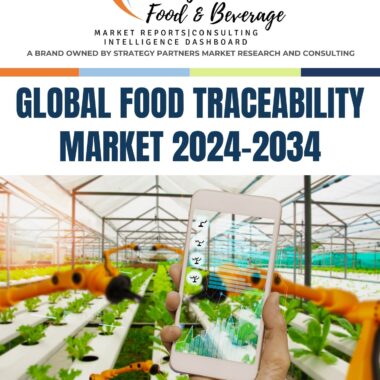Description
Food stabilizer systems are essential components in the food industry, playing a crucial role in enhancing the quality, safety, and shelf life of a wide range of food products. These systems consist of various additives and ingredients that help maintain the desired texture, appearance, and flavor of food while preventing undesirable changes during processing, storage, and distribution. This paragraph will delve into the significance of food stabilizer systems, the diverse applications they serve, and their impact on modern food production and consumption.
Food stabilizer systems encompass a broad spectrum of substances, including emulsifiers, thickeners, gelling agents, and preservatives, among others. Each component serves a specific purpose in food stabilization, contributing to various aspects of a product’s quality and longevity.
One of the primary functions of food stabilizer systems is to maintain the texture and consistency of food products. In the baking industry, for example, dough conditioners are used to improve the extensibility and elasticity of the dough, resulting in better bread texture and volume. In dairy products, stabilizers like gelatin and pectin are employed to control the viscosity of yogurt and maintain its creamy texture. These systems help ensure that consumers consistently enjoy the desired sensory properties of their favorite foods.
Emulsifiers are a crucial component of food stabilizer systems, as they facilitate the blending of ingredients that do not naturally mix, such as oil and water. This is particularly important in the production of salad dressings, mayonnaise, and various processed foods. Emulsifiers ensure that these products maintain a uniform consistency and do not separate over time, providing convenience and an appealing appearance to consumers.
Thickeners, another integral part of food stabilizer systems, are employed to enhance the viscosity of food products. They are commonly used in soups, sauces, and gravies to provide the desired thickness and mouthfeel. Thickeners like cornstarch, guar gum, and xanthan gum allow for precise control of the product’s texture, ensuring that it meets consumer expectations.
Gelling agents are used to create gel-like structures in food products, which is crucial in items like jams, jellies, and fruit preserves. Pectin, a naturally occurring gelling agent, is commonly used in fruit preserves to achieve the characteristic gel structure that preserves the fruit’s texture and flavor. These gelling agents enable the development of a wide variety of food products with distinct textures and forms.
Food stabilizer systems also play a significant role in extending the shelf life of food products. Antioxidants and preservatives are included in these systems to inhibit the oxidation of fats and oils, prevent microbial spoilage, and slow down the deterioration of food. This is particularly essential in the case of packaged and processed foods that need to have a longer shelf life to reach consumers worldwide.
In the meat and poultry industry, food stabilizer systems, often in the form of antimicrobial agents, are used to inhibit the growth of harmful bacteria and pathogens. This ensures the safety of meat products and reduces the risk of foodborne illnesses. Additionally, these systems help maintain the quality of meat products during storage and transportation, preventing spoilage and preserving the flavor and texture.
Food stabilizer systems are indispensable in the production of ice cream and frozen desserts. Emulsifiers and stabilizers are used to control ice crystal formation, preventing the development of an unpleasant gritty texture. These systems also contribute to the creaminess and scoopability of the final product, enhancing the overall consumer experience.
The dairy industry benefits greatly from food stabilizer systems, where they are used in the production of a wide range of dairy products, including milk-based beverages, creamers, and cheese. Stabilizers and emulsifiers help create a stable emulsion in milk-based beverages, preventing the separation of fat and water, which is essential for the product’s visual appeal and mouthfeel. In cheese production, enzymes and coagulants are used to stabilize milk proteins and form the characteristic curd structure, which is essential for the development of various types of cheese.
Food stabilizer systems also support the production of non-dairy alternatives, such as plant-based milk and yogurt. These systems are essential for achieving a texture and consistency that mimic traditional dairy products while ensuring a satisfying taste and mouthfeel.
In the beverage industry, food stabilizer systems contribute to the stability and visual appeal of a wide range of drinks, including soft drinks, fruit juices, and alcoholic beverages. They help prevent sedimentation, cloudiness, and phase separation in these products, ensuring that consumers enjoy a visually appealing and consistent drink.
Food stabilizer systems are instrumental in the confectionery industry, where they play a critical role in the production of gummies, candies, and chocolates. Gelling agents and thickeners are used to create the desired textures in gummy candies, providing the right chewiness and mouthfeel. In chocolate production, tempering agents and emulsifiers are employed to control the crystalline structure of cocoa butter, ensuring that the chocolate has a smooth and glossy appearance.
The importance of food stabilizer systems extends to the convenience food industry, where they are used in the production of ready-to-eat meals, instant soups, and microwaveable snacks. These systems help maintain the quality and texture of these products during processing and storage, ensuring that consumers can enjoy a satisfying and convenient meal.
Food stabilizer systems have evolved in response to changing consumer preferences and demands. As consumers increasingly seek healthier and more natural food options, there is a growing trend towards the use of plant-based stabilizers and clean label ingredients. These alternatives aim to achieve the same stabilization functions while reducing reliance on synthetic additives.
The impact of food stabilizer systems is also evident in food allergy management. In products that contain allergenic ingredients, allergen-free stabilizers are used to prevent cross-contamination and provide consumers with safe food choices. This is particularly important for individuals with food allergies or intolerances who rely on clear labeling and allergen management.
In summary, food stabilizer systems are indispensable in the modern food industry, serving a multitude of functions that enhance the quality, safety, and shelf life of food products. These systems ensure that consumers consistently enjoy the sensory properties of their favorite foods while also facilitating the production of convenient and safe food options. As the industry continues to evolve and respond to changing consumer preferences, food stabilizer systems will play a pivotal role in shaping the future of food production and consumption.
Table of Content
1 Market Introduction- Global Food Stabilizer Systems Market
1.1 Market Segmentation- Global Food Stabilizer Systems Market
1.2 Key Trends- Global Food Stabilizer Systems Market
1.2.1 Drivers
1.2.2 Restraints
1.2.3 Challenges
2 Global Market Forecast- Global Food Stabilizer Systems Market
2.1.1 By Region
2.1.2 By Application
2.1.3 By Source
2.1.4 By Type
3 Country Wise Forecast- Global Food Stabilizer Systems Market
3.1 US
3.1.1 Key Trends
3.1.2 Consumer Spending
o Population
o GDP
o CPI
o Spend per Capita
o Spend as a proportion of GDP
3.1.3 Market Forecast- US Food Stabilizer Systems Market
o By Application
o By Source
o By Type
3.1.4 Key Competitors- US Food Stabilizer Systems Market
3.1.5 EXIM
3.1.6 Patents
3.1.7 Scenario Analysis- US Food Stabilizer Systems Market
3.1.8 Opportunity Analysis- US Food Stabilizer Systems Market
3.2 Canada
3.2.1 Key Trends
3.2.2 Consumer Spending
o Population
o GDP
o CPI
o Spend per Capita
o Spend as a proportion of GDP
3.2.3 Market Forecast- Canada Food Stabilizer Systems Market
o By Application
o By Source
o By Type
3.2.4 Key Competitors- Canada Food Stabilizer Systems Market
3.2.5 EXIM
3.2.6 Patents
3.2.7 Scenario Analysis- Canada Food Stabilizer Systems Market
3.2.8 Opportunity Analysis- Canada Food Stabilizer Systems Market
3.3 UK
3.3.1 Key Trends
3.3.2 Consumer Spending
o Population
o GDP
o CPI
o Spend per Capita
o Spend as a proportion of GDP
3.3.3 Market Forecast- UK Food Stabilizer Systems Market
o By Application
o By Source
o By Type
3.3.4 Key Competitors- UK Food Stabilizer Systems Market
3.3.5 EXIM
3.3.6 Patents
3.3.7 Scenario Analysis- UK Food Stabilizer Systems Market
3.3.8 Opportunity Analysis- UK Food Stabilizer Systems Market
3.4 Germany
3.4.1 Key Trends
3.4.2 Consumer Spending
o Population
o GDP
o CPI
o Spend per Capita
o Spend as a proportion of GDP
3.4.3 Market Forecast- Germany Food Stabilizer Systems Market
o By Application
o By Source
o By Type
3.4.4 Key Competitors- Germany Food Stabilizer Systems Market
3.4.5 EXIM
3.4.6 Patents
3.4.7 Scenario Analysis- Germany Food Stabilizer Systems Market
3.4.8 Opportunity Analysis- Germany Food Stabilizer Systems Market
3.5 France
3.5.1 Key Trends
3.5.2 Consumer Spending
o Population
o GDP
o CPI
o Spend per Capita
o Spend as a proportion of GDP
3.5.3 Market Forecast- France Food Stabilizer Systems Market
o By Application
o By Source
o By Type
3.5.4 Key Competitors- France Food Stabilizer Systems Market
3.5.5 EXIM
3.5.6 Patents
3.5.7 Scenario Analysis- France Food Stabilizer Systems Market
3.5.8 Opportunity Analysis- France Food Stabilizer Systems Market
3.6 Italy
3.6.1 Key Trends
3.6.2 Consumer Spending
o Population
o GDP
o CPI
o Spend per Capita
o Spend as a proportion of GDP
3.6.3 Market Forecast- Italy Food Stabilizer Systems Market
o By Application
o By Source
o By Type
3.6.4 Key Competitors- Italy Food Stabilizer Systems Market
3.6.5 EXIM
3.6.6 Patents
3.6.7 Scenario Analysis- Italy Food Stabilizer Systems Market
3.6.8 Opportunity Analysis- Italy Food Stabilizer Systems Market
3.7 Ireland
3.7.1 Key Trends
3.7.2 Consumer Spending
o Population
o GDP
o CPI
o Spend per Capita
o Spend as a proportion of GDP
3.7.3 Market Forecast- Ireland Food Stabilizer Systems Market
o By Application
o By Source
o By Type
3.7.4 Key Competitors- Ireland Food Stabilizer Systems Market
3.7.5 EXIM
3.7.6 Patents
3.7.7 Scenario Analysis- Ireland Food Stabilizer Systems Market
3.7.8 Opportunity Analysis- Ireland Food Stabilizer Systems Market
3.8 Spain
3.8.1 Key Trends
3.8.2 Consumer Spending
o Population
o GDP
o CPI
o Spend per Capita
o Spend as a proportion of GDP
3.8.3 Market Forecast- Spain Food Stabilizer Systems Market
o By Application
o By Source
o By Type
3.8.4 Key Competitors- Spain Food Stabilizer Systems Market
3.8.5 EXIM
3.8.6 Patents
3.8.7 Scenario Analysis- Spain Food Stabilizer Systems Market
3.8.8 Opportunity Analysis- Spain Food Stabilizer Systems Market
3.9 Belgium
3.9.1 Key Trends
3.9.2 Consumer Spending
o Population
o GDP
o CPI
o Spend per Capita
o Spend as a proportion of GDP
3.9.3 Market Forecast- Belgium Food Stabilizer Systems Market
o By Application
o By Source
o By Type
3.9.4 Key Competitors- Belgium Food Stabilizer Systems Market
3.9.5 EXIM
3.9.6 Patents
3.9.7 Scenario Analysis- Belgium Food Stabilizer Systems Market
3.9.8 Opportunity Analysis- Belgium Food Stabilizer Systems Market
3.10 Switzerland
3.10.1 Key Trends
3.10.2 Consumer Spending
o Population
o GDP
o CPI
o Spend per Capita
o Spend as a proportion of GDP
3.10.3 Market Forecast- Switzerland Food Stabilizer Systems Market
o By Application
o By Source
o By Type
3.10.4 Key Competitors- Switzerland Food Stabilizer Systems Market
3.10.5 EXIM
3.10.6 Patents
3.10.7 Scenario Analysis- Switzerland Food Stabilizer Systems Market
3.10.8 Opportunity Analysis- Switzerland Food Stabilizer Systems Market
3.11 Sweden
3.11.1 Key Trends
3.11.2 Consumer Spending
o Population
o GDP
o CPI
o Spend per Capita
o Spend as a proportion of GDP
3.11.3 Market Forecast- Sweden Food Stabilizer Systems Market
o By Application
o By Source
o By Type
3.11.4 Key Competitors- Sweden Food Stabilizer Systems Market
3.11.5 EXIM
3.11.6 Patents
3.11.7 Scenario Analysis- Sweden Food Stabilizer Systems Market
3.11.8 Opportunity Analysis- Sweden Food Stabilizer Systems Market
3.12 Portugal
3.12.1 Key Trends
3.12.2 Consumer Spending
o Population
o GDP
o CPI
o Spend per Capita
o Spend as a proportion of GDP
3.12.3 Market Forecast- Portugal Food Stabilizer Systems Market
o By Application
o By Source
o By Type
3.12.4 Key Competitors- Portugal Food Stabilizer Systems Market
3.12.5 EXIM
3.12.6 Patents
3.12.7 Scenario Analysis- Portugal Food Stabilizer Systems Market
3.12.8 Opportunity Analysis- Portugal Food Stabilizer Systems Market
3.13 The Netherlands
3.13.1 Key Trends
3.13.2 Consumer Spending
o Population
o GDP
o CPI
o Spend per Capita
o Spend as a proportion of GDP
3.13.3 Market Forecast- Netherlands Food Stabilizer Systems Market
o By Application
o By Source
o By Type
3.13.4 Key Competitors- Netherlands Food Stabilizer Systems Market
3.13.5 EXIM
3.13.6 Patents
3.13.7 Scenario Analysis- Netherlands Food Stabilizer Systems Market
3.13.8 Opportunity Analysis- Netherlands Food Stabilizer Systems Market
3.14 Brazil
3.14.1 Key Trends
3.14.2 Consumer Spending
o Population
o GDP
o CPI
o Spend per Capita
o Spend as a proportion of GDP
3.14.3 Market Forecast- Brazil Food Stabilizer Systems Market
o By Application
o By Source
o By Type
3.14.4 Key Competitors- Brazil Food Stabilizer Systems Market
3.14.5 EXIM
3.14.6 Patents
3.14.7 Scenario Analysis- Brazil Food Stabilizer Systems Market
3.14.8 Opportunity Analysis- Brazil Food Stabilizer Systems Market
3.15 Mexico
3.15.1 Key Trends
3.15.2 Consumer Spending
o Population
o GDP
o CPI
o Spend per Capita
o Spend as a proportion of GDP
3.15.3 Market Forecast- Mexico Food Stabilizer Systems Market
o By Application
o By Source
o By Type
3.15.4 Key Competitors- Mexico Food Stabilizer Systems Market
3.15.5 EXIM
3.15.6 Patents
3.15.7 Scenario Analysis- Mexico Food Stabilizer Systems Market
3.15.8 Opportunity Analysis- Mexico Food Stabilizer Systems Market
3.16 Australia
3.16.1 Key Trends
3.16.2 Consumer Spending
o Population
o GDP
o CPI
o Spend per Capita
o Spend as a proportion of GDP
3.16.3 Market Forecast- Australia Food Stabilizer Systems Market
o By Application
o By Source
o By Type
3.16.4 Key Competitors- Australia Food Stabilizer Systems Market
3.16.5 EXIM
3.16.6 Patents
3.16.7 Scenario Analysis- Australia Food Stabilizer Systems Market
3.16.8 Opportunity Analysis- Australia Food Stabilizer Systems Market
3.17 China
3.17.1 Key Trends
3.17.2 Consumer Spending
o Population
o GDP
o CPI
o Spend per Capita
o Spend as a proportion of GDP
3.17.3 Market Forecast- China Food Stabilizer Systems Market
o By Application
o By Source
o By Type
3.17.4 Key Competitors- China Food Stabilizer Systems Market
3.17.5 EXIM
3.17.6 Patents
3.17.7 Scenario Analysis- China Food Stabilizer Systems Market
3.17.8 Opportunity Analysis- China Food Stabilizer Systems Market
3.18 Indonesia
3.18.1 Key Trends
3.18.2 Consumer Spending
o Population
o GDP
o CPI
o Spend per Capita
o Spend as a proportion of GDP
3.18.3 Market Forecast- Indonesia Food Stabilizer Systems Market
o By Application
o By Source
o By Type
3.18.4 Key Competitors- Indonesia Food Stabilizer Systems Market
3.18.5 EXIM
3.18.6 Patents
3.18.7 Scenario Analysis- Indonesia Food Stabilizer Systems Market
3.18.8 Opportunity Analysis- Indonesia Food Stabilizer Systems Market
3.19 India
3.19.1 Key Trends
3.19.2 Consumer Spending
o Population
o GDP
o CPI
o Spend per Capita
o Spend as a proportion of GDP
3.19.3 Market Forecast- India Food Stabilizer Systems Market
o By Application
o By Source
o By Type
3.19.4 Key Competitors- India Food Stabilizer Systems Market
3.19.5 EXIM
3.19.6 Patents
3.19.7 Scenario Analysis- India Food Stabilizer Systems Market
3.19.8 Opportunity Analysis- India Food Stabilizer Systems Market
3.20 Japan
3.20.1 Key Trends
3.20.2 Consumer Spending
o Population
o GDP
o CPI
o Spend per Capita
o Spend as a proportion of GDP
3.20.3 Market Forecast- Japan Food Stabilizer Systems Market
o By Application
o By Source
o By Type
3.20.4 Key Competitors- Japan Food Stabilizer Systems Market
3.20.5 EXIM
3.20.6 Patents
3.20.7 Scenario Analysis- Japan Food Stabilizer Systems Market
3.20.8 Opportunity Analysis- Japan Food Stabilizer Systems Market
3.21 South Korea
3.21.1 Key Trends
3.21.2 Consumer Spending
o Population
o GDP
o CPI
o Spend per Capita
o Spend as a proportion of GDP
3.21.3 Market Forecast- South Korea Food Stabilizer Systems Market
o By Application
o By Source
o By Type
3.21.4 Key Competitors- South Korea Food Stabilizer Systems Market
3.21.5 EXIM
3.21.6 Patents
3.21.7 Scenario Analysis- South Korea Food Stabilizer Systems Market
3.21.8 Opportunity Analysis- South Korea Food Stabilizer Systems Market
3.22 Thailand
3.22.1 Key Trends
3.22.2 Consumer Spending
o Population
o GDP
o CPI
o Spend per Capita
o Spend as a proportion of GDP
3.22.3 Market Forecast- Thailand Food Stabilizer Systems Market
o By Application
o By Source
o By Type
3.22.4 Key Competitors- Thailand Food Stabilizer Systems Market
3.22.5 EXIM
3.22.6 Patents
3.22.7 Scenario Analysis- Thailand Food Stabilizer Systems Market
3.22.8 Opportunity Analysis- Thailand Food Stabilizer Systems Market
3.23 Malaysia
3.23.1 Key Trends
3.23.2 Consumer Spending
o Population
o GDP
o CPI
o Spend per Capita
o Spend as a proportion of GDP
3.23.3 Market Forecast- Malaysia Food Stabilizer Systems Market
o By Application
o By Source
o By Type
3.23.4 Key Competitors- Malaysia Food Stabilizer Systems Market
3.23.5 EXIM
3.23.6 Patents
3.23.7 Scenario Analysis- Malaysia Food Stabilizer Systems Market
3.23.8 Opportunity Analysis- Malaysia Food Stabilizer Systems Market
3.24 Singapore
3.24.1 Key Trends
3.24.2 Consumer Spending
o Population
o GDP
o CPI
o Spend per Capita
o Spend as a proportion of GDP
3.24.3 Market Forecast- Singapore Food Stabilizer Systems Market
o By Application
o By Source
o By Type
3.24.4 Key Competitors- Singapore Food Stabilizer Systems Market
3.24.5 EXIM
3.24.6 Patents
3.24.7 Scenario Analysis- Singapore Food Stabilizer Systems Market
3.24.8 Opportunity Analysis- Singapore Food Stabilizer Systems Market
4 Opportunity Matrix- Global Food Stabilizer Systems Market
5 Conclusions and Recommendations- Global Food Stabilizer Systems Market
6 About Global Food & Beverage




